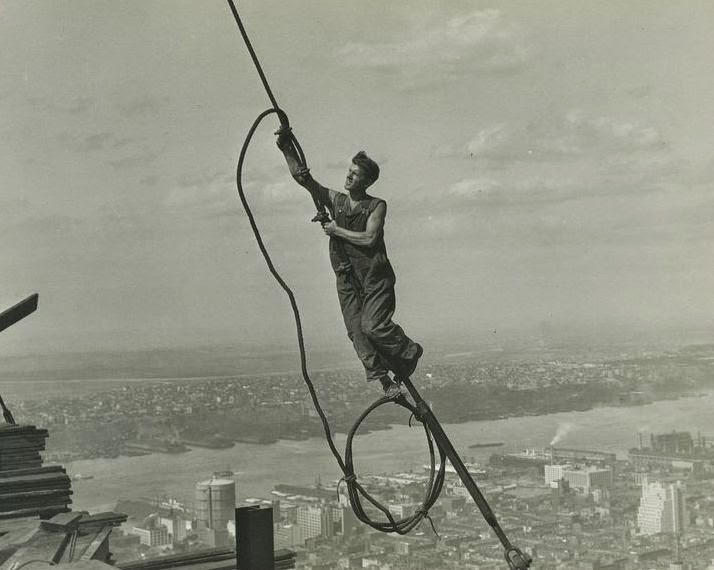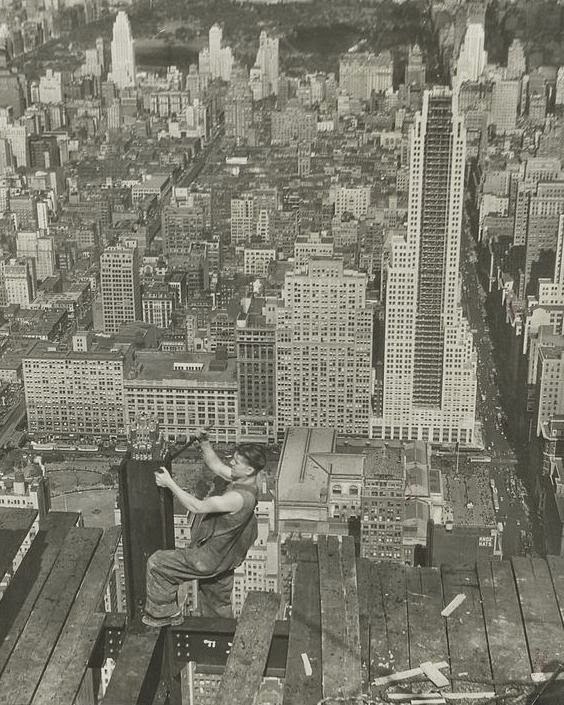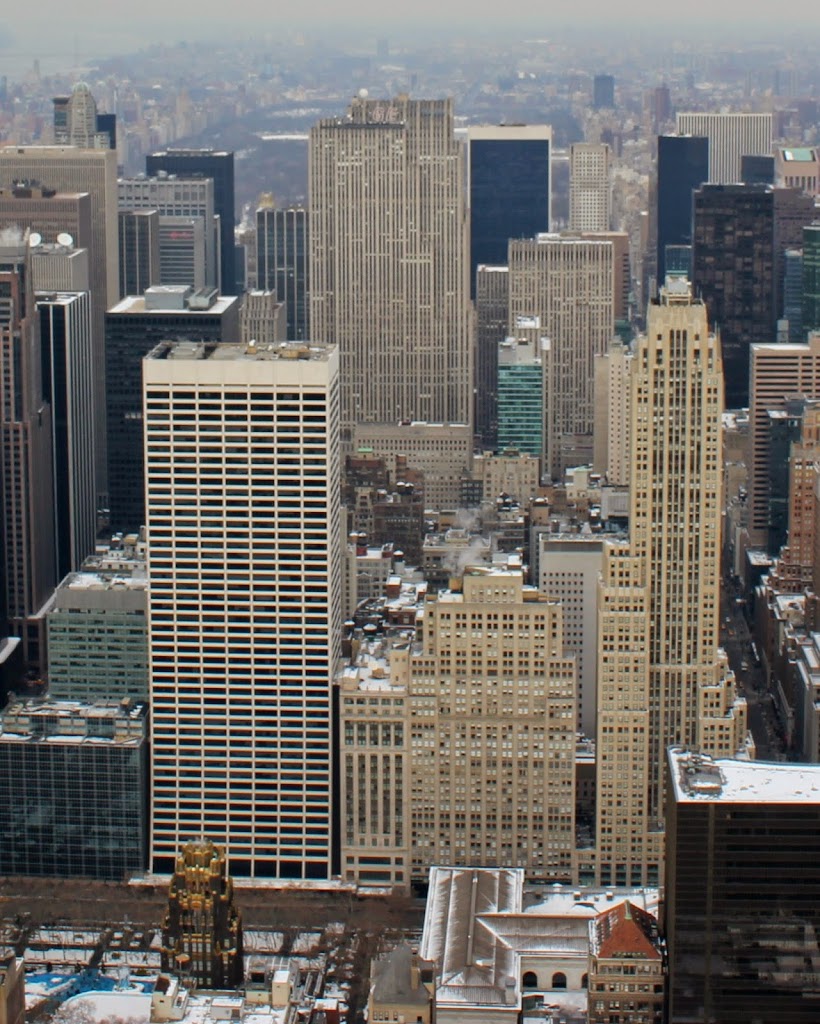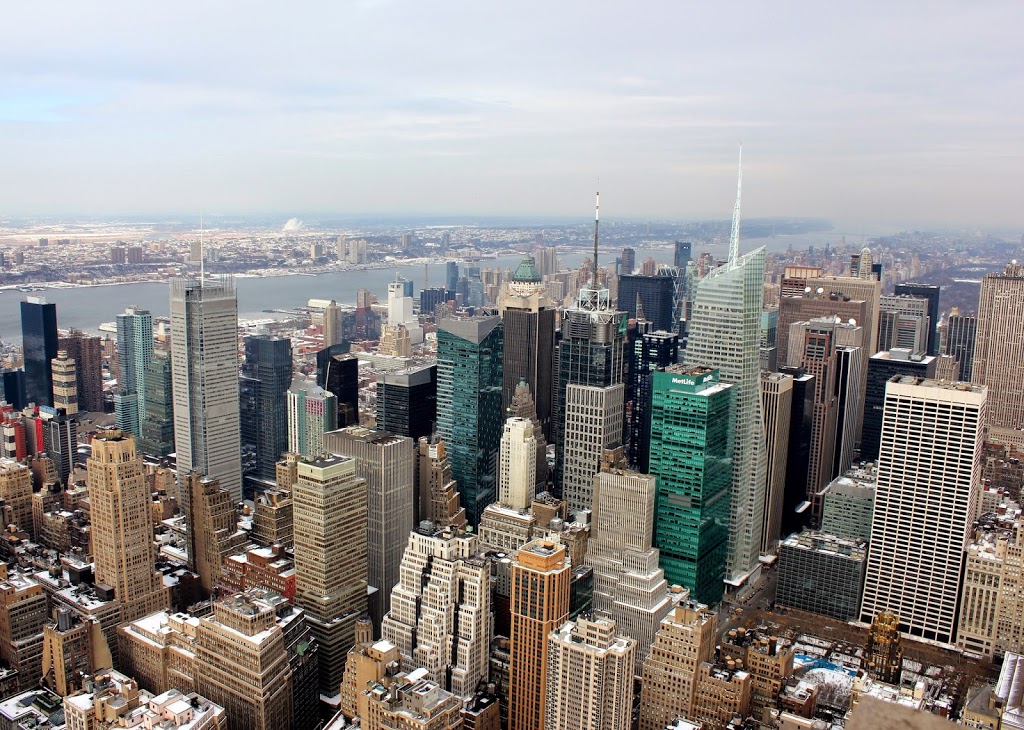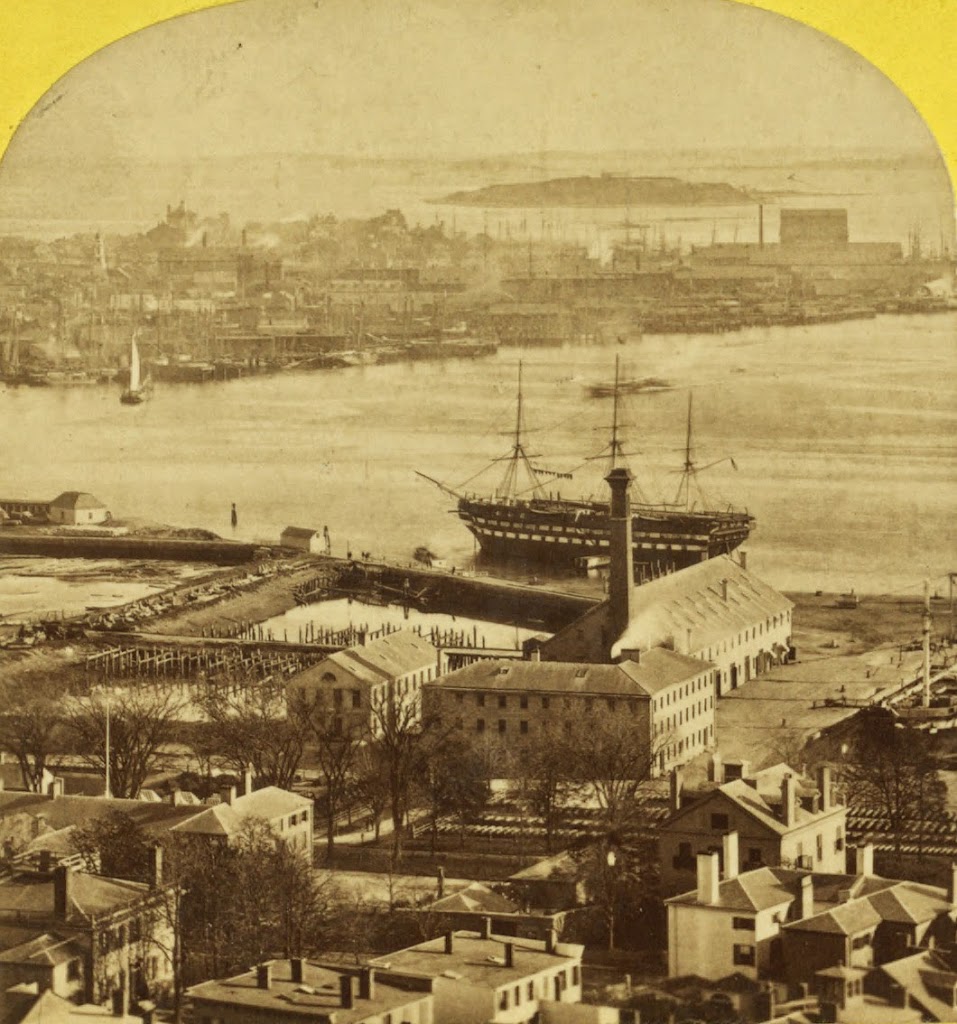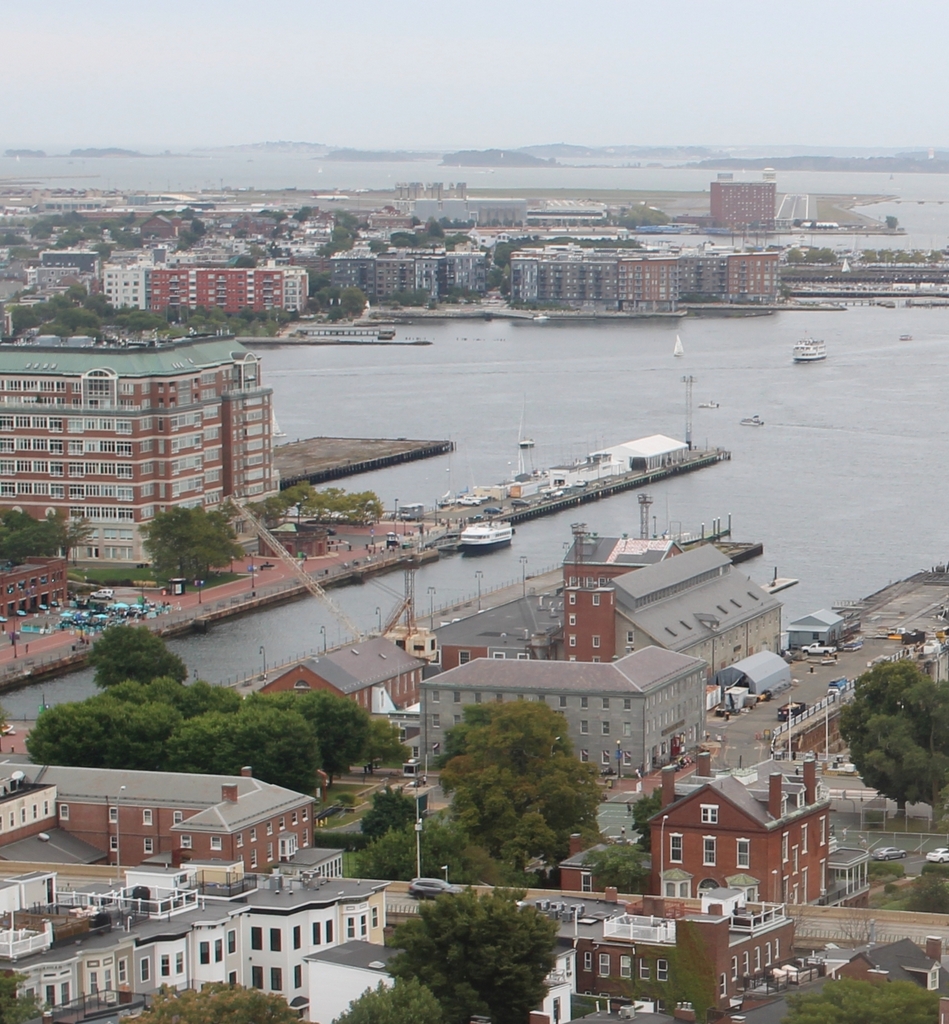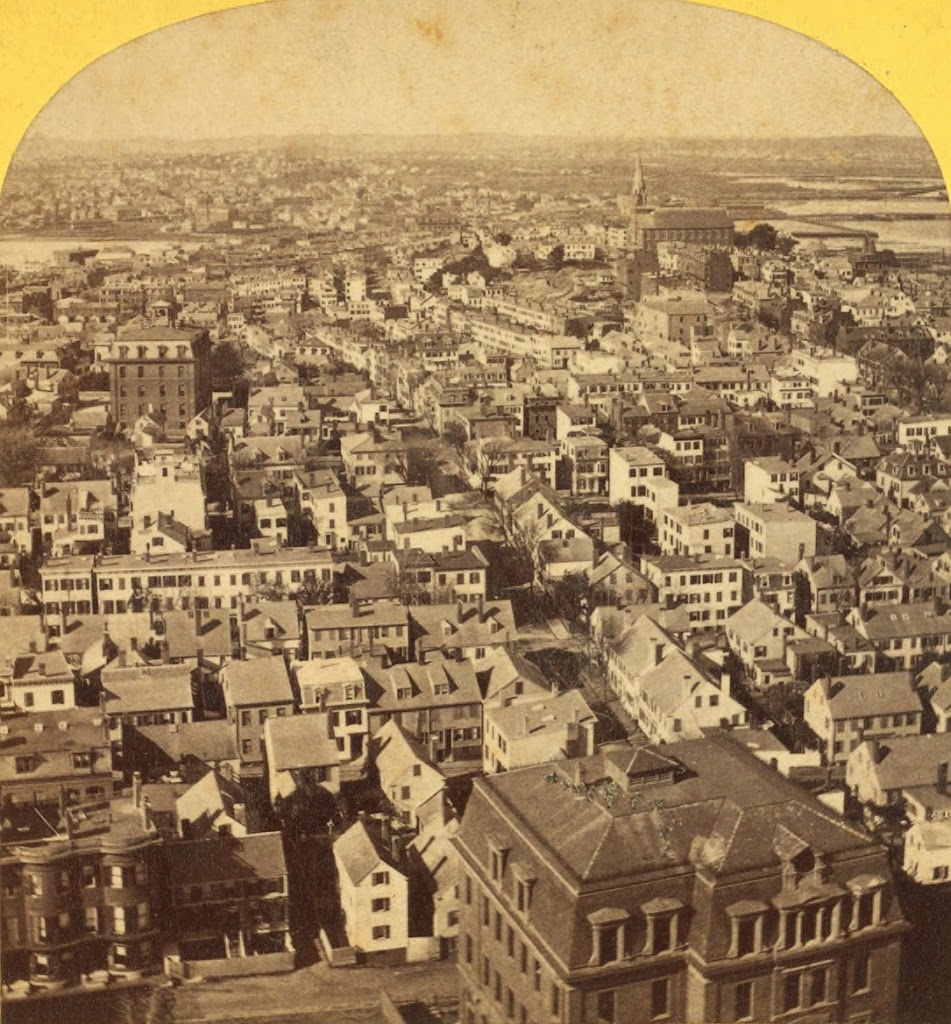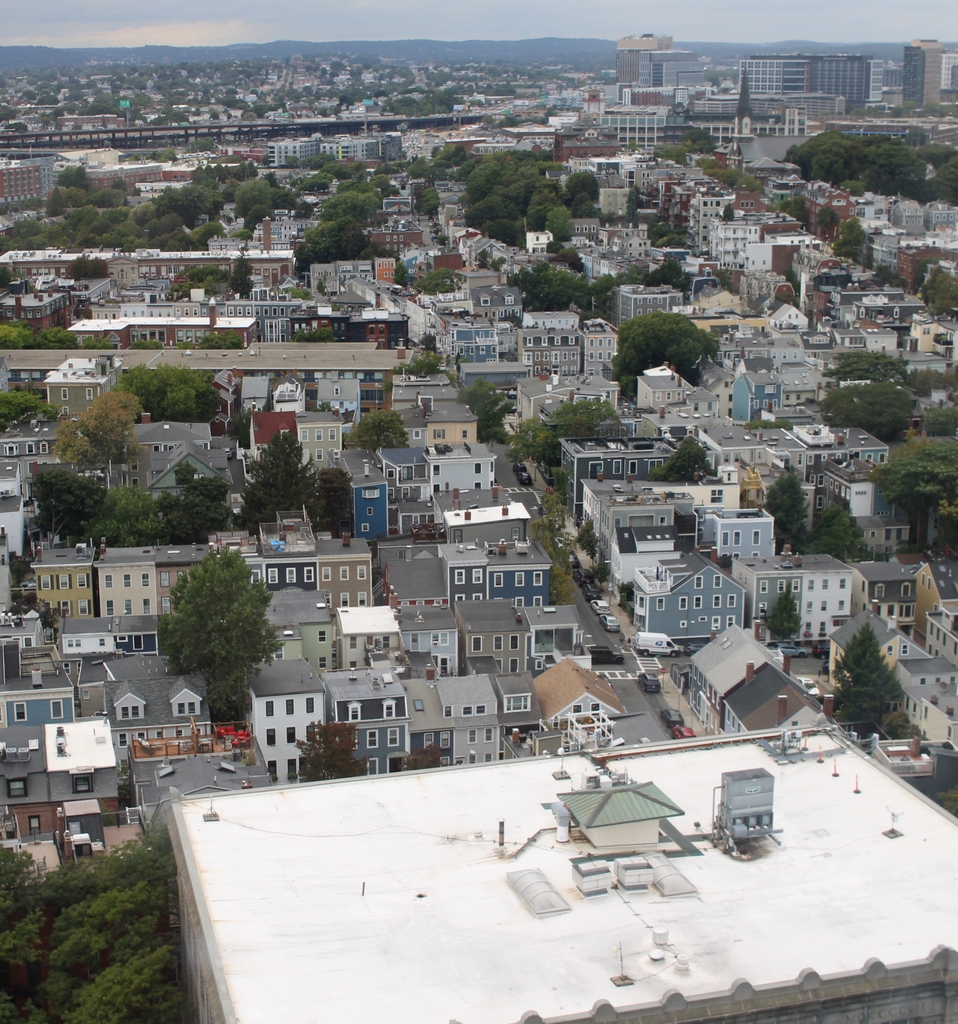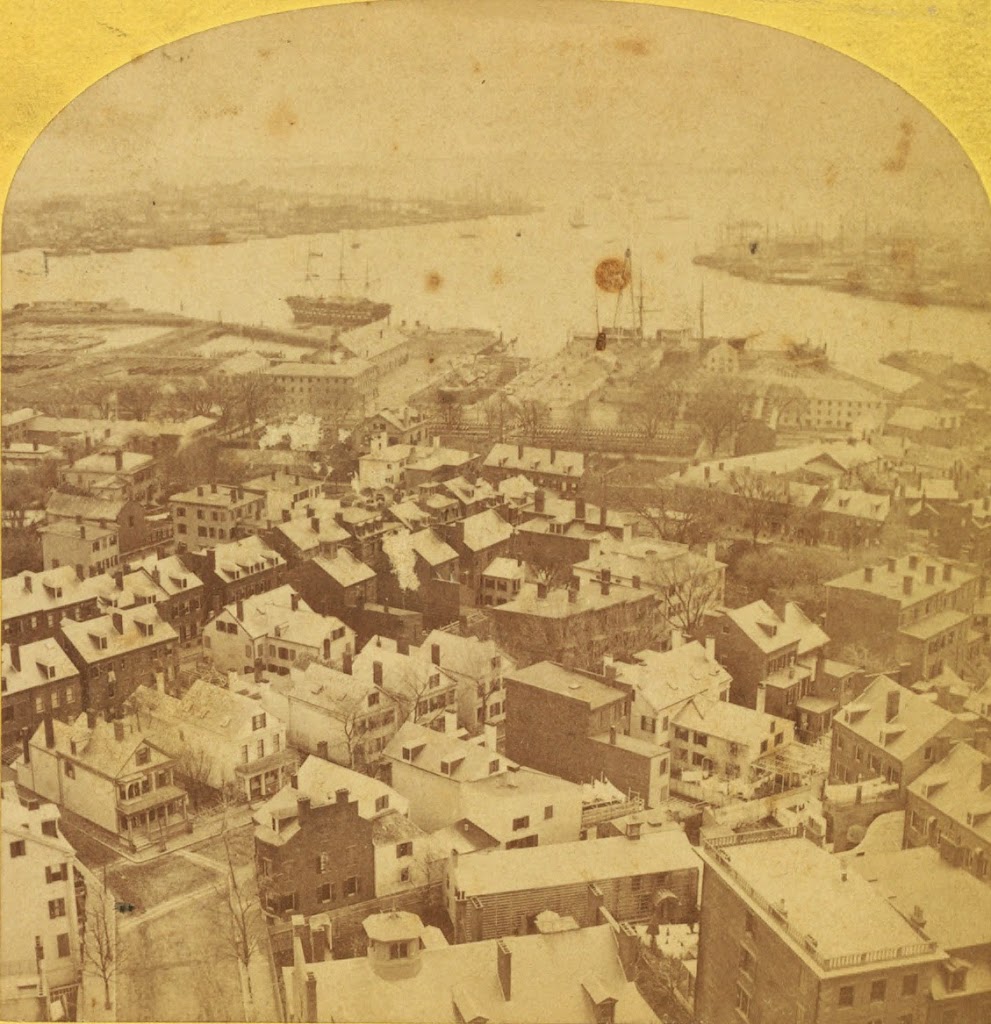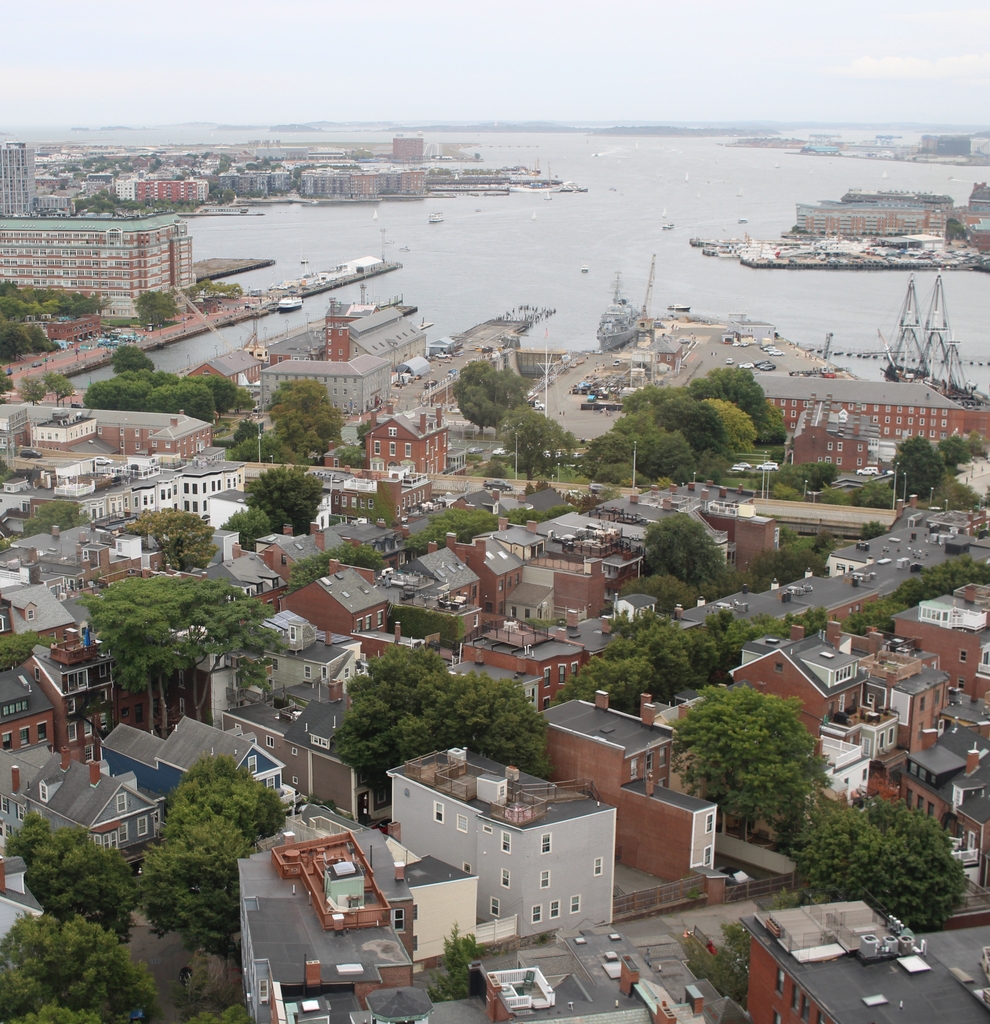A worker atop the Empire State Building in 1931. Photo courtesy of New York Public Library.
The view in 2011:
The caption of the first photo is “Icarus, high up on Empire State.” However, this worker, thankfully, did not have his wings (cable?) melt. Both photos show some of the changes in the area looking north of the Empire State Building, toward the Upper West Side, the Hudson River, and New Jersey beyond it. The only readily-identifiable building from both photos is the large white building in the lower right corner of the 931 photo – it is barely noticeable in the same area of the 2011 photo.

